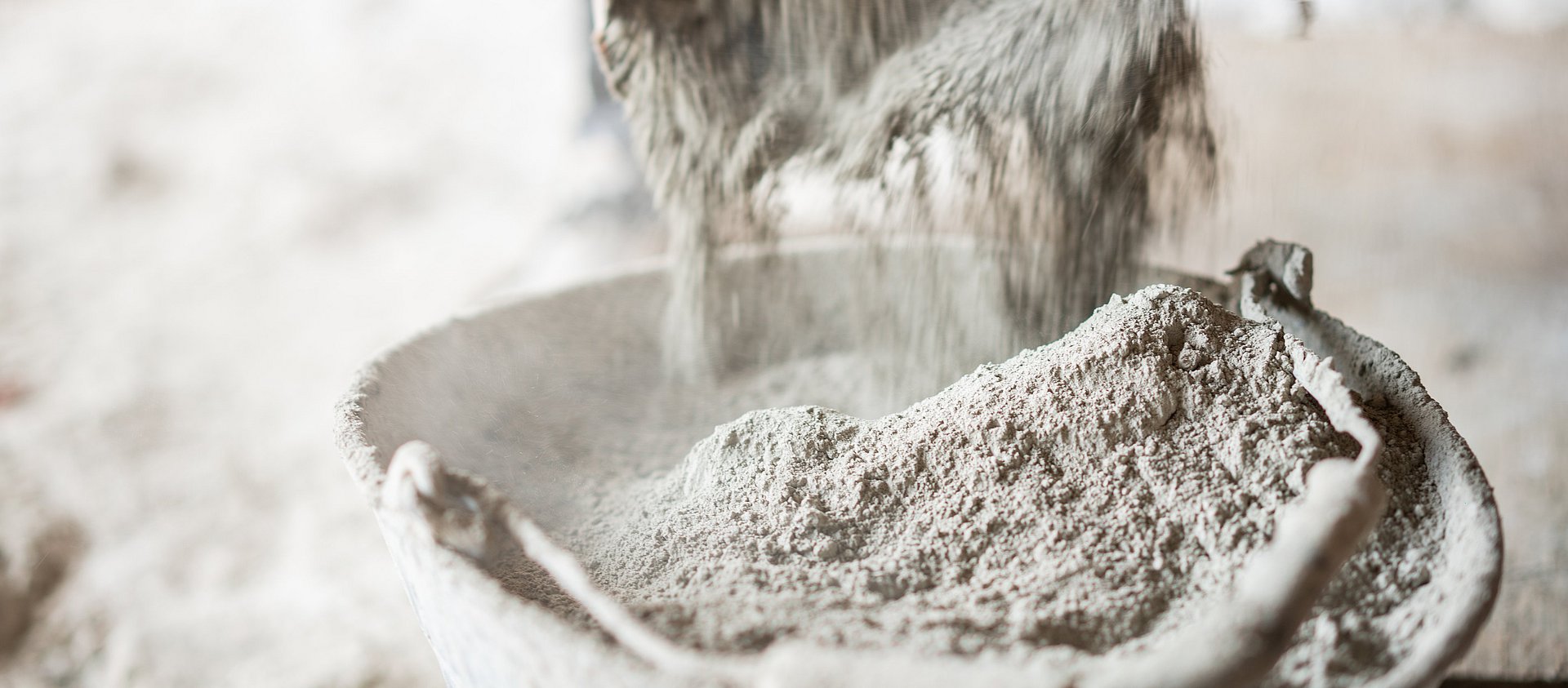Cement Production
Classic clinker is produced using a complex firing process. First, the required raw materials limestone, clay and sand are ground into a fine mixture, the raw meal, in a grinding plant. The raw meal is then treated in a rotary kiln. Here, the raw meal is preheated in a complex exhaust gas system using the hot exhaust gases from the rotary kiln. A high degree of deacidification (driving the CO2 out of the limestone) can already be achieved in the calciner. The pre-treated raw meal can then be fed into the rotary kiln. Here, in the heart of the cement production plant, the actual clinker firing takes place. At temperatures of up to 1450°C, the raw meal is partially melted and sintered at the same time. This forms the clinker phases typical of Portland cement. The fired clinker is then cooled quickly and in a targeted manner to ensure that the desired clinker phases are achieved. Granules also form in the rotary kiln during the drying process.
IBU-tec experience with cement
IBU-tec's experience in cement production is based on the long history of the Weimar site. Starting with limestone quarrying, through lime firing, development and research site of SKET/cement plant construction to today's IBU-tec. As a service provider for the thermal treatment of bulk materials, the cement industry is a natural partner for us. We have built up know-how in the development and analysis of cement clinker in numerous laboratory tests and rotary kiln trials. With the existing rotary kiln systems and the extensive range of analyses (ICP-OES, XRD, dynamic laboratory combustion apparatus, free-alkali and full clinker analysis), IBU-tec is the right partner for questions relating to the cement process. In addition to testing the suitability of new raw material sources for clinker production, the focus is particularly on adapting the raw meal composition with a view to saving energy. Lower CO2 contents in the raw meal and clinker firing at lower temperatures can help to minimize the unavoidable CO2 emissions during clinker production.
In addition to carrying out tests and analyses, IBU-tec has also built up extensive expertise in plant and process engineering for cement clinker production. With complex and extensive measurements in existing cement plants, we can help to optimize processes and reduce energy requirements. In addition to the metrological examination of individual units to test their function, IBU-tec can also evaluate elaborate and complex process adaptations in advance. An example of this is the determination of the connection position of chlorine bypass systems. The chlorine present in the fuel and raw meal forms strongly deposit-forming phases with alkali metals, which can lead to blockages in the kiln system and have a negative impact on the firing process. Based on extensive sampling of the raw gas dust in the kiln inlet area and the associated dust analysis, we can use our wealth of experience to determine the optimum position of the bypass connection and design the bypass. In this way, we can help to stabilize the clinker production process with minimum technical and energy expenditure.

